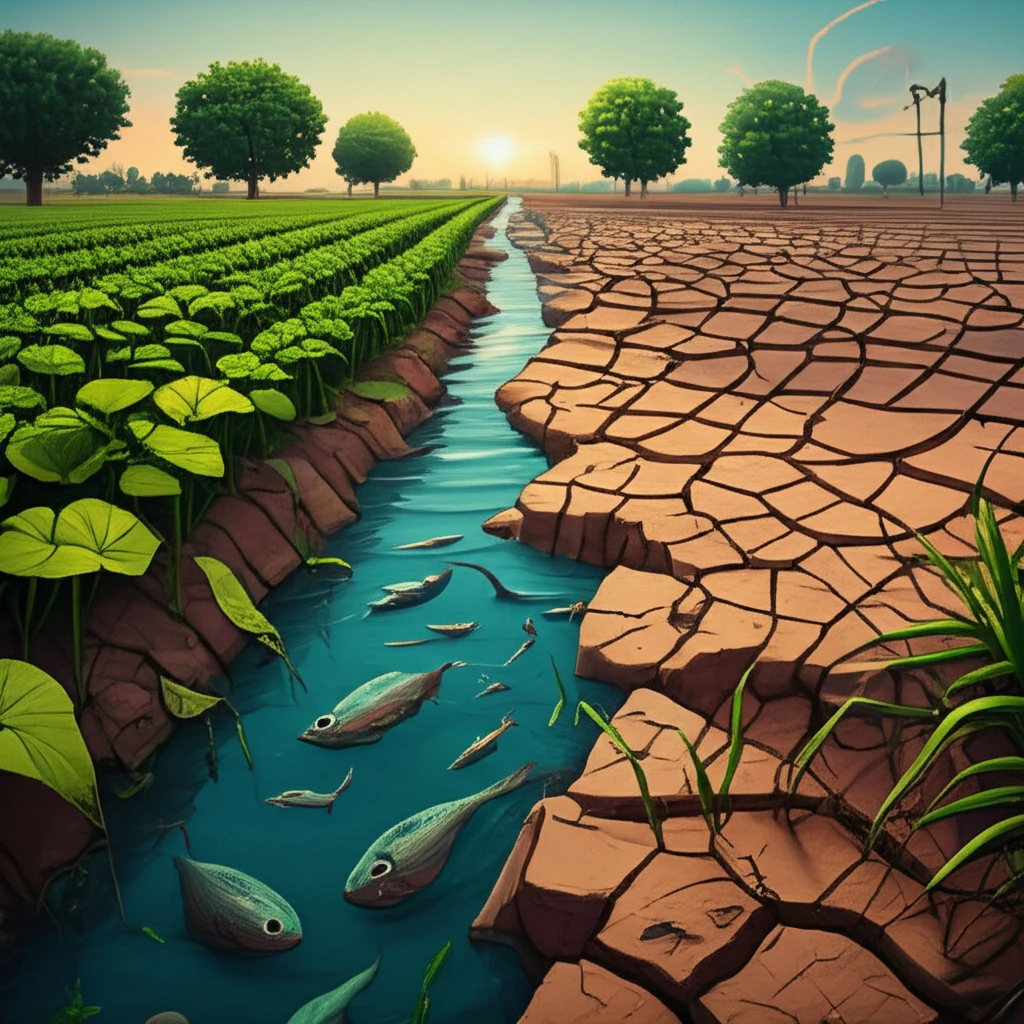
The Hidden Impacts of Our Food: How Pesticides Affect Freshwater Ecosystems and What We Can Do About It
"Discover the unseen consequences of pesticide use in agriculture and its impact on our planet's freshwater sources. Learn how modeling choices can make a difference in assessing ecotoxicity."
In our ever-growing demand for food, fiber, and bioenergy, agriculture has ramped up production, but at a cost. The environmental impact of modern farming practices is a growing concern, and it's crucial to have effective tools to evaluate and mitigate these effects. One of the most widely used tools is Life Cycle Assessment (LCA), which quantifies the potential impacts of products and systems throughout their entire life cycles. However, when it comes to agriculture, accurately modeling emissions from pesticide use remains a significant challenge.
Pesticides, while essential for controlling weeds, pests, and diseases that threaten crop yields, can have unintended consequences. The fractions of pesticides that miss their intended target can adversely affect the environment and the ecosystems that support it. This is where the concept of ecotoxicity comes into play – the potential for a substance to harm living organisms. Accurately assessing this ecotoxicity is vital for sustainable agriculture, and one of the primary methods is through modeling pesticide emissions and their subsequent impacts.
This article dives into a recent study that addresses this challenge by leveraging the latest recommendations for pesticide emission inventory and impact assessment. We'll explore how researchers framed a suitable interface for different LCA stages, carefully considering the mass distribution of pesticides to avoid overlapping temporal effects. The focus? Freshwater ecotoxicity impacts from feed crop production in Denmark, evaluated over three years, testing different inventory modeling effects and the most recent updates of the USEtox characterization method. Get ready to uncover the hidden impacts of our food and what we can do to cultivate a more sustainable future.
Unpacking the Ecotoxicity Puzzle: Modeling Pesticide Impacts

The study focuses on feed crops—maize, grass, winter wheat, spring barley, rapeseed, and peas—in Denmark over a three-year period (2013-2015). The researchers evaluated freshwater ecotoxicity impacts using two functional units: crop impact profiles per hectare and the extent of cultivation. These units provide a comprehensive view, reflecting both the intensity of impact per area and the overall impact due to the scale of cultivation.
- Interface Matters: The interface between inventory estimates and impact assessment is crucial. How we connect the data significantly affects the final results.
- Consider Intermediate Processes: Factors like crop growth development and pesticide application methods play a vital role. Overlooking these can skew the assessment.
- Scenario Sensitivity: Impact scores varied across scenarios. AS2 showed higher scores than RS and AS1, but the crop ranking remained fairly consistent.
Cultivating a More Sustainable Future: Key Takeaways and Actions
This research underscores the urgent need for a more nuanced understanding of pesticide use in agriculture. By carefully considering modeling choices, we can better assess the true impact of these chemicals on freshwater ecosystems. The reduction of harmful insecticides like cypermethrin demonstrates that positive change is possible. Farmers, policymakers, and consumers all have a role to play in fostering sustainable agricultural practices that minimize environmental harm. From integrated pest management to informed consumer choices, every action counts towards protecting our planet's precious freshwater resources.
